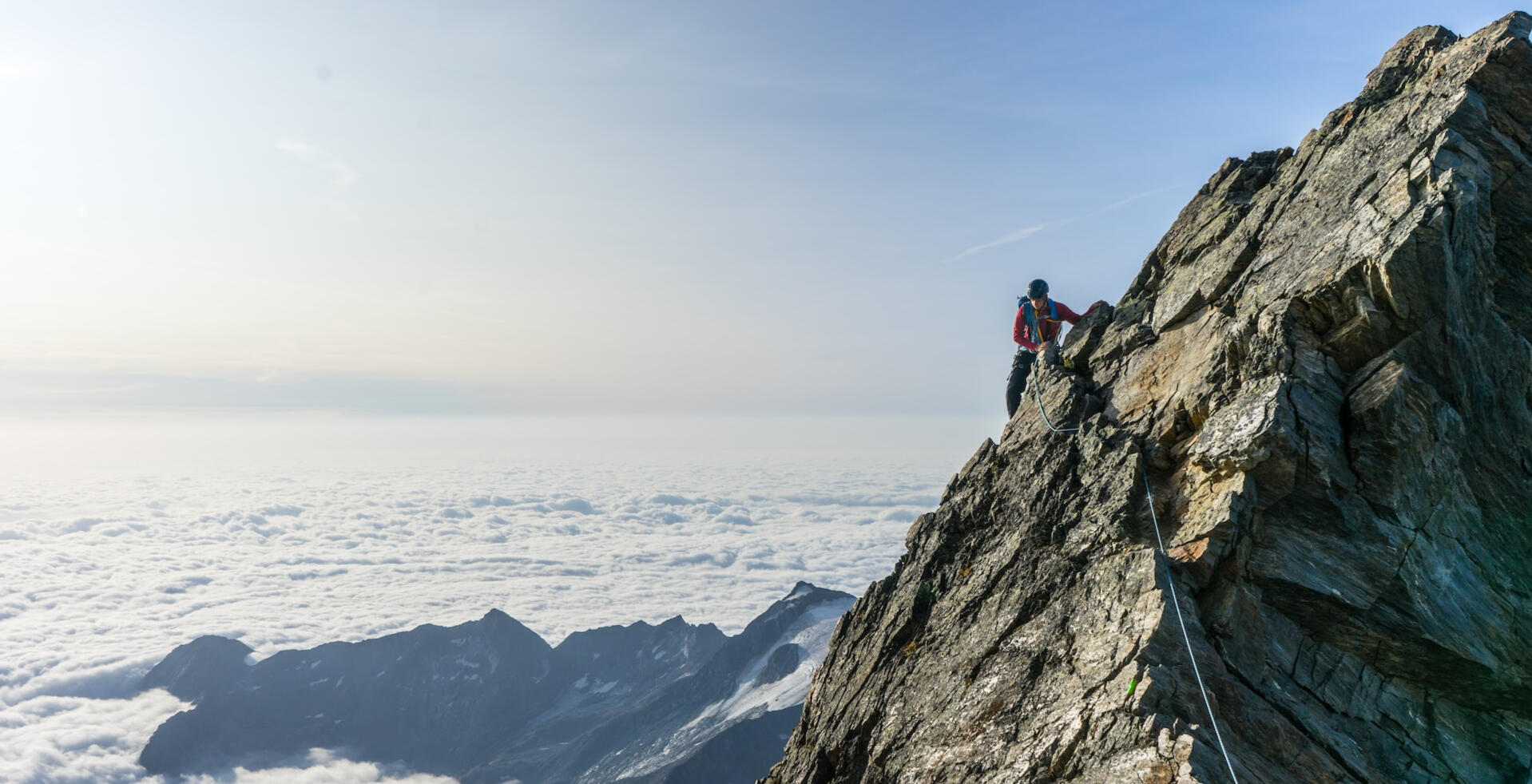Blog
From the Summit of Mountains to the Summit of Sport: The History of Rock Climbing
Rock climbing is an activity that has captured the imagination of people throughout history. From its humble beginnings in the mountains of Central Asia to becoming a global extreme sport, rock climbing has evolved in many ways. This article will trace the fascinating history of rock climbing, from its early origins in ancient times to the thrilling challenges it faces today.Rock Climbing in Antiquity: A Means of SurvivalRock climbing did not start as a sport but as a means of survival in mountainous regions. Communities living in the mountains relied on their climbing skills to access resources such as hunting, plant gathering, and territory observation. In ancient times, mountain dwellers used rudimentary climbing techniques, such as scaling rocks and using ropes made from natural materials.Mountains played a significant role in the mythology and religion of many ancient cultures. For example, Mount Olympus in Greece was considered the home of the gods, and people often ascended these sacred summits as an act of devotion. Ancient Egyptians also had important mountains in their religion, such as Mount Sinai, where Moses received the Tablets of the Law.The Middle Ages and the Renaissance: Climbing as EntertainmentAs history progressed, rock climbing began to develop as a form of entertainment and competition in medieval Europe. Fortresses and castles often required climbers for defense or invasion, and the art of climbing became an essential military skill. Castles often had climbing walls and moats that challenged invaders to overcome seemingly insurmountable obstacles.The European Renaissance also saw a growing interest in climbing as a sport. As cities grew, city walls became popular venues for climbing competitions. These events were a showcase of physical skill and bravery, drawing enthusiastic audiences. Competitors would ascend the city walls in pursuit of glory and recognition.19th Century Mountaineering: Exploration and Mountain ConquestThe 19th century marked a turning point in the history of climbing with the development of mountaineering in the European Alps. Explorers and adventurers were drawn to the majestic and challenging peaks of the Alps and began ascending mountains for exploration and conquest.In 1865, British mountaineer Edward Whymper became the first person to reach the summit of the Matterhorn in the Swiss Alps, a feat that marked the beginning of a golden age in mountaineering. Throughout the 19th and early 20th centuries, numerous expeditions were conducted in search of new routes and unclimbed peaks.The development of improved climbing gear and techniques, such as the use of pitons and fixed ropes, allowed mountaineers to tackle increasingly larger and more dangerous challenges. However, climbing at that time was far from being an accessible sport for all; it was considered an elite activity reserved for a few brave adventurers.The Age of Sport Climbing: The Birth of a DisciplineAs the 20th century progressed, rock climbing experienced a revolution with the introduction of sport climbing. Instead of focusing on conquering remote summits, sport climbing emphasized overcoming specific routes in climbing gyms and natural rock formations. This new form of climbing emphasized technique, strength, and agility rather than exploration and mountain conquest.One of the most significant milestones in the history of sport climbing was the invention of the first climbing protection device in 1869 by Albert F. Mummery. This allowed climbers to protect themselves and their climbing partners from dangerous falls, paving the way for tackling challenging and technical routes.As sport climbing gained popularity, difficulty ratings were established, and specific climbing routes were created to challenge climbers to overcome increasingly complex obstacles. The difficulty rating system for climbing routes, known as the Yosemite Decimal System, was introduced in the 1930s and has been fundamental in sport climbing ever since.The 20th Century: Advances in Technical Mountaineering and Rock ClimbingAs the 20th century progressed, significant advancements were made in technical mountaineering and rock climbing. Climbers began seeking more challenging and technical routes to ascend. Gear also became more specialized and advanced, allowing climbers to tackle more difficult and dangerous routes.One of the most notable moments in the history of rock climbing was the first ascent of El Capitan's Nose in Yosemite National Park in 1958 by Warren Harding, Wayne Merry, and George Whitmore. This route, considered one of the most iconic and challenging in the climbing world, required innovative approaches and advanced techniques to overcome its obstacles.In the 1970s, rock climbing saw a surge in popularity, especially in the United States. Climbing areas like Joshua Tree and Yosemite National Park became popular destinations for climbers seeking technical challenges on granite and sandstone formations.The Evolution of Sport Climbing: From Gyms to CompetitionAs the second half of the 20th century unfolded, sport climbing diversified into various disciplines, including indoor climbing, outdoor rock climbing, and competition climbing. Climbing gyms began to proliferate worldwide, providing climbers with a place to train and improve their skills in a controlled environment.Sport climbing also became a competitive discipline with the creation of indoor climbing competitions and outdoor events. In 1985, the International Federation of Sport Climbing (IFSC) was established to oversee and regulate climbing competitions worldwide. Climbing competitions include disciplines such as speed climbing, bouldering, and lead climbing, leading to the creation of a global community of competitive climbers.The Rise of Bouldering: Maximum Strength and AgilityIn bouldering, climbers face intensely challenging, short routes without ropes or safety harnesses. Rather than reaching high summits, the goal is to solve climbing problems on routes that often do not exceed 20 feet in height. Bouldering emphasizes strength, agility, and problem-solving and has gained a passionate following worldwide.Bouldering has become a popular discipline in climbing competitions, and bouldering gyms offer climbers a place to practice and improve their skills. Bouldering routes often feature acrobatic movements and challenging sequences that require a combination of strength and technique.The Sport Climbing Revolution: Outdoor Rock ClimbingOutdoor sport climbing has experienced significant growth in popularity in recent decades. Natural rock formations around the world have become popular destinations for climbers seeking technical challenges and the beauty of nature.Locations such as Kalymnos in Greece, Smith Rock in Oregon, and Red River Gorge in Kentucky offer world-class climbing routes that challenge climbers' skills and endurance. These rock formations often offer a variety of climbing styles, from vertical slabs to overhanging roofs, allowing climbers to explore and develop a wide range of skills.The 21st Century Sport Climbing BoomIn the 21st century, sport climbing has continued to evolve and grow in popularity. Access to information through the internet and the availability of advanced equipment have contributed to the spread of climbing as a sport. Additionally, sport climbing has become an Olympic discipline, with its debut at the Tokyo 2020 Olympics, further increasing its visibility and appeal.Elite climbers have taken climbing to new levels of difficulty. Climbers like Adam Ondra, Alex Honnold, and Sasha DiGiulian are just a few of the prominent names in today's sport climbing scene. These climbers have conquered routes that were once considered impossible, leading to the creation of new difficulty ratings and pushing the boundaries of what is possible in climbing.Current Challenges in ClimbingDespite its growth and evolution, climbing faces significant challenges today. The increasing influx of climbers in natural areas has raised concerns about environmental impact and the sustainability of outdoor climbing.Climbing ethics, including the preservation of natural areas and respect for local communities, have become fundamental in the climbing community.Furthermore, climbing remains a high-risk sport, and safety is a constant concern. Climbers must have a deep understanding of safety techniques, as well as reliable and well-maintained gear. Safety training and education are essential to prevent serious accidents.Conclusion: A Sport in Constant EvolutionThe history of climbing is a fascinating narrative of evolution and transformation over the centuries. From its roots as a survival skill in the mountains to becoming a global sport, climbing has evolved in many ways. Today, climbing is a sport that encompasses a wide variety of styles and disciplines, from bouldering to outdoor sport climbing, and continues to grow in popularity worldwide.As climbing continues to evolve, it is essential for the climbing community to address current challenges, such as environmental sustainability and safety. Climbing ethics and safety education are crucial to ensure that climbing remains an exciting and safe activity for future generations.The history of climbing is a story of exploration, adventure, and overcoming obstacles and continues to be a source of inspiration for people around the world seeking physical and mental challenges in the pursuit of new heights.

